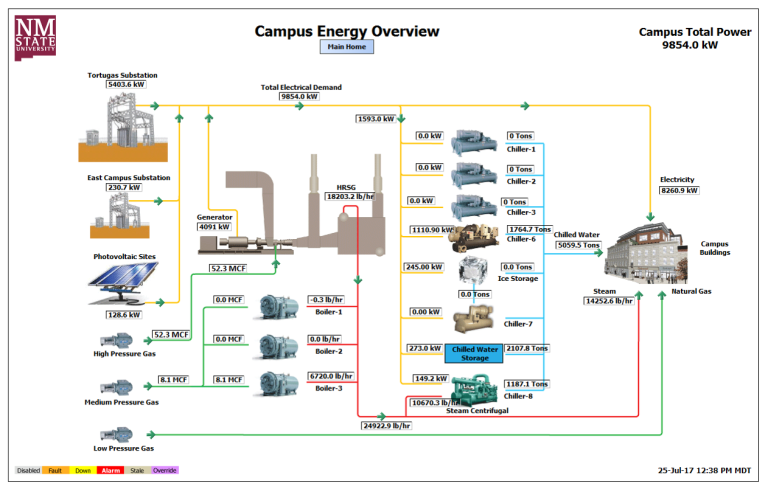Energy
New Mexico State University contracted with Ameresco to make facilities more energy efficient.
Energy Reduction
 The NMSU Board of Regents voted in 2013 to approve NMSU’s energy performance contract with Ameresco. During a seven month process Ameresco conducted an investment grade audit of 46 of NMSU’s buildings throughout the state, totaling nearly 2.7 million gross square feet. The proposed improvements were based on nine energy conservation measures indicated by Ameresco during the audit. This audit included the facilities at Alamogordo, Carlsbad, Dona Ana Community College, and Grants, the remote Agricultural Science Centers and all buildings on main campus. Ameresco’s audit identified $45 million in potential energy-related projects through efforts similar to lighting upgrades, retro-commissioning and more. From there the university decided to move forward on a select group of those projects in order to prove the concept resulting in a $15.7 million bond to be paid off over 13 years, from the avoided costs from the project.
The NMSU Board of Regents voted in 2013 to approve NMSU’s energy performance contract with Ameresco. During a seven month process Ameresco conducted an investment grade audit of 46 of NMSU’s buildings throughout the state, totaling nearly 2.7 million gross square feet. The proposed improvements were based on nine energy conservation measures indicated by Ameresco during the audit. This audit included the facilities at Alamogordo, Carlsbad, Dona Ana Community College, and Grants, the remote Agricultural Science Centers and all buildings on main campus. Ameresco’s audit identified $45 million in potential energy-related projects through efforts similar to lighting upgrades, retro-commissioning and more. From there the university decided to move forward on a select group of those projects in order to prove the concept resulting in a $15.7 million bond to be paid off over 13 years, from the avoided costs from the project.

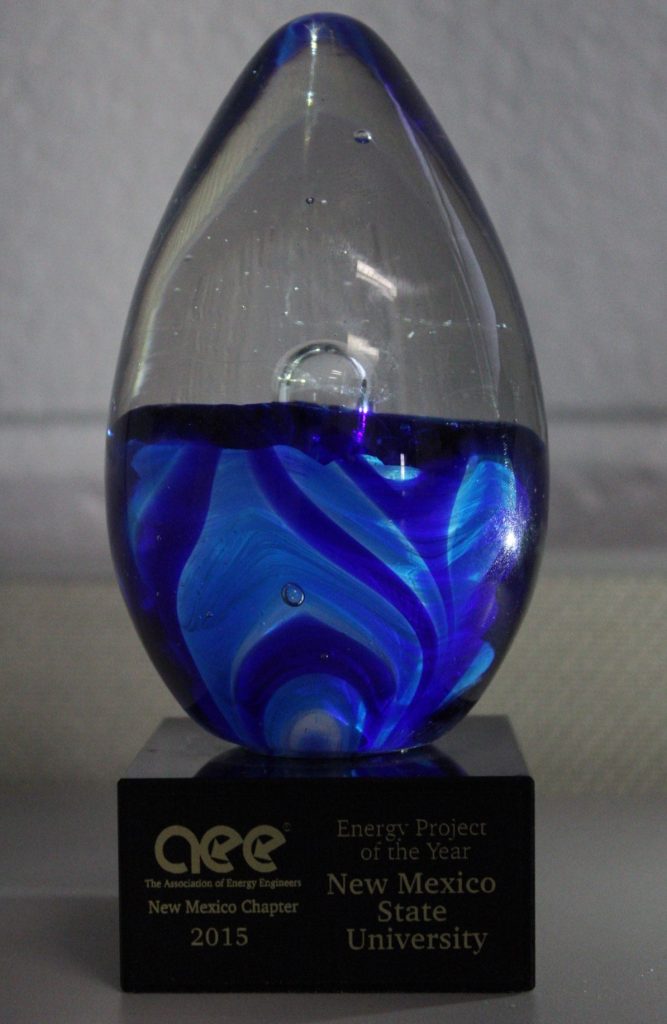 At the time the university’s contract with Ameresco was one of the largest performance contracts in the state, and NMSU is often cited as an example by state officials of what other agencies in New Mexico could be doing to make their facilities more energy efficient.
At the time the university’s contract with Ameresco was one of the largest performance contracts in the state, and NMSU is often cited as an example by state officials of what other agencies in New Mexico could be doing to make their facilities more energy efficient.
This project was awarded the 2015 Energy Project of the Year by the New Mexico Association of Energy Engineers.
The first project of a lighting retrofit of Branson Library. This chart shows us what Branson Library’s energy reduction from the Ameresco contract in 2014.
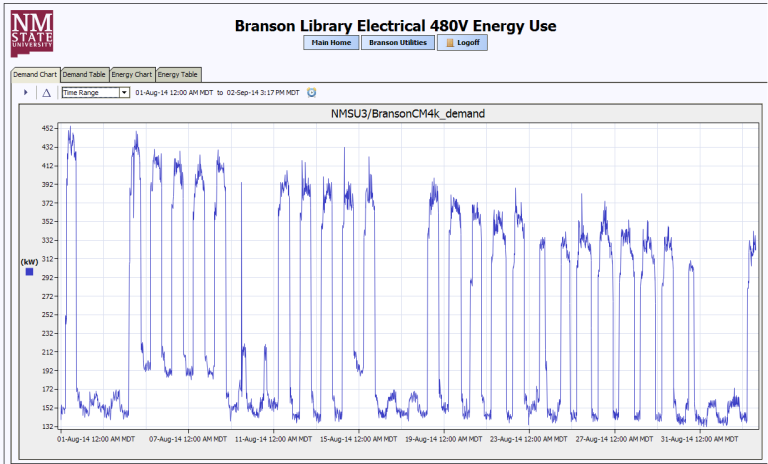
Current Solar
Two solar parking canopies were installed on campus to offset power consumption. One of them produces 108 kilowatts of power at full capacity, while the other produces 72.3 kilowatts of power at full capacity. Both canopies provide shade to a total of 60 parking spaces. Energy converted from the solar panels directly affect the university’s Satellite Chiller Plant, where the campus’ cooling system is controlled.
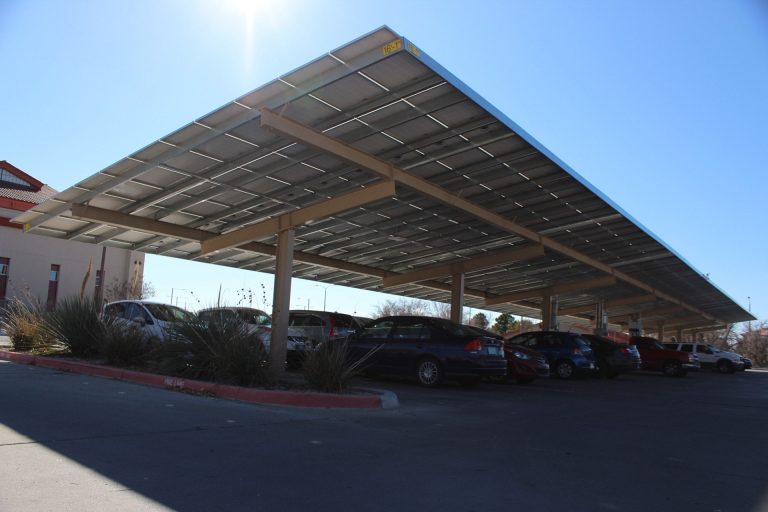
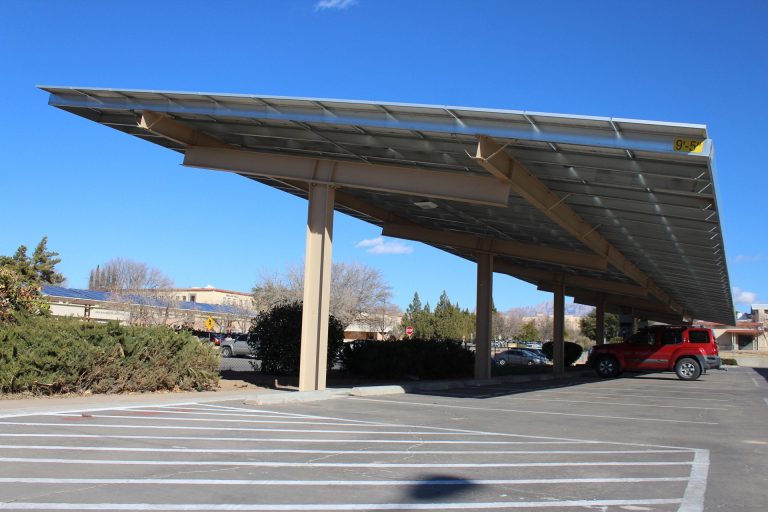
Turbines
As a tribute to the contribution of windmills to America’s agricultural heritage, the NMSU Windmill Technology Center maintains a small collection of windmills on NMSU main campus
Building Temperature Setpoints
Facilities and Services would like to remind everyone at the New Mexico State University Las Cruces campus of our temperature set-point standard, particularly now that our energy services contractor must guarantee or savings.
With respect to heating and cooling systems, NMSU buildings fall into three general categories: those buildings with thermostats and systems that are controlled remotely; building systems with local temperature control and remote system start/stop capability; and building systems with local control only.
Occupied mode temperature settings for buildings that allow for remote temperature control will be 76o F for cooling and 69o F for heating. Occupancy times are an established practice developed through discussion with faculty and staff to minimize the impact on academic and research programs.
Unoccupied mode temperature settings are 85o F for cooling and 60o F for heating. Unoccupied is generally defined as all other times, i.e., nights and weekends. Buildings with manual thermostats will be set at 76o F for the summer months and 69o F for the winter months. Thermostats may have a temperature variation of plus or minus two degrees.
In the News
NMSU saves big on energy contract – Adriana M. Chavez (11/17/2016)
NMSU partners with Ameresco for a comprehensive energy audit – Emily C. Kelley (7/1/2013)
FAQ:
What ways are we trying to save energy?
NMSU has a three-million-gallon thermal storage tank that stores chilled water for use throughout campus during the day. By using the storage tank, NMSU is able to chill water at night when the utility rates are lower. This avoids the need for an additional electric chiller. The university is using an automated control system to provide cooling to controlled buildings during the occupied portion of the day, while conserving energy during non-occupied times. NMSU also owns a 4.9-megawatt co-generation unit fired by natural gas that produces one-third of the electricity the university needs during its peak hours. This unit is equipped with a heat recovery steam generator which takes the waste heat and converts it to steam. This steam can then be used as thermal energy including sometimes running two 1,500-ton absorption chiller units to provide 3,000 tons of cooling to campus.
Is NMSU wanting to do more renewable energy?
For 2020 there is a very early stage in implementing a major solar project.
Where does NMSU get its power?
Throughout NMSU there is a tunnel system that houses the major utility systems, including some electricity. A little less than 50 percent of our energy comes from El Paso Electric and the other 50 percent is from high-pressure gas, boilers, chillers, chilled water storage, steam, and some solar.
